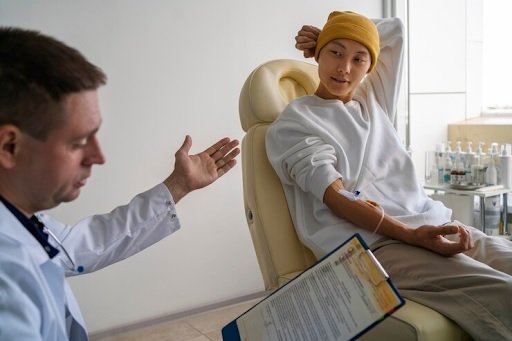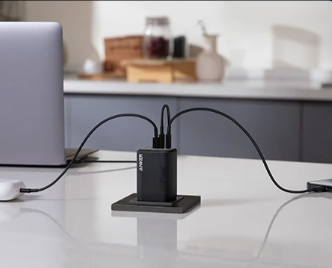Avascular necrosis (AVN), also known as osteonecrosis, is a debilitating condition that occurs when blood supply is lost to the bone, leading to bone tissue death and potential joint collapse. The disease most commonly affects the hips, but can also impact other bones such as the knees, shoulders, and ankles. Understanding the causes of avascular necrosis is critical in preventing, diagnosing, and treating this condition. This article explores the various factors that can lead to avascular necrosis, elucidating the underlying mechanisms and risk factors.
1. Trauma and Injury
Trauma is one of the most direct cause of avascular necrosis. Physical injuries such as fractures or dislocations can damage the blood vessels that supply the bone. When these vessels are torn or blocked, the bone tissue can no longer receive the oxygen and nutrients necessary for survival, leading to necrosis. Common traumatic incidents leading to AVN include:
- Fractures: A break in a bone can disrupt the blood flow, particularly if the fracture occurs near joints where the blood supply is more vulnerable.
- Dislocations: When a joint is dislocated, the surrounding blood vessels can be stretched or torn, leading to interrupted blood flow.
2. Non-Traumatic Causes
While trauma is a straightforward cause, avascular necrosis can also result from non-traumatic factors. These factors often involve systemic conditions or external influences that impair blood flow to the bone.
Corticosteroid Use
The use of corticosteroids is one of the most significant non-traumatic risk factors for AVN. These drugs, commonly prescribed for a range of inflammatory and autoimmune conditions, can lead to AVN through multiple mechanisms:
- Fat Deposition: Corticosteroids can increase the amount of fat within the blood vessels, leading to blockages that reduce blood flow to the bone.
- Cell Death: They can induce apoptosis (programmed cell death) in bone cells, directly contributing to bone tissue death.
Alcohol Consumption
Chronic, excessive alcohol consumption is another major non-traumatic cause of AVN. Alcohol can disrupt the blood supply to bones by:
- Fatty Deposits: Similar to corticosteroids, excessive alcohol intake can lead to fatty deposits within blood vessels, causing blockages.
- Liver Disease: Alcoholism often leads to liver disease, which can impair the body’s ability to process fats and other substances, indirectly affecting blood flow to bones.
Thrombosis and Coagulopathies
Blood clotting disorders can also cause avascular necrosis. Conditions that increase the likelihood of blood clot formation can lead to thrombosis (blood clots) in the arteries supplying the bone. Examples include:
- Sickle Cell Disease: This inherited blood disorder causes abnormally shaped red blood cells that can block blood vessels, leading to AVN.
- Antiphospholipid Syndrome: An autoimmune disorder that increases the risk of blood clots, thereby impairing blood flow to the bone.
3. Metabolic and Endocrine Disorders
Certain metabolic and endocrine disorders are associated with an increased risk of AVN. These conditions can affect the blood supply to bones through various mechanisms.
Diabetes Mellitus
Diabetes can lead to AVN through several pathways:
- Microvascular Disease: Diabetes can cause small blood vessels to become thickened and narrowed, reducing blood flow.
- Neuropathy: Nerve damage in diabetes can result in reduced mobility and altered bone metabolism, increasing the risk of AVN.
Hyperlipidemia
Elevated levels of lipids (fats) in the blood can lead to fatty deposits in the blood vessels, similar to the effects of corticosteroids and alcohol, which can block the blood supply to bones and cause necrosis.
4. Genetic Factors
Genetic predisposition can play a role in the development of avascular necrosis. Certain genetic disorders are known to increase the risk of AVN:
- Gaucher’s Disease: A genetic disorder where fatty substances accumulate in cells and organs, particularly affecting bone tissue and blood vessels.
- Inherited Coagulopathies: Genetic mutations affecting blood clotting can predispose individuals to thrombosis and subsequent AVN.
5. Other Risk Factors
In addition to the primary causes mentioned above, several other risk factors can contribute to the development of avascular necrosis.
Radiation Therapy
Radiation therapy used to treat cancers can damage blood vessels in the targeted area, reducing blood flow to the bone and leading to AVN. The risk is particularly high in treatments involving the pelvic region.
Organ Transplants
Patients who have undergone organ transplants are often prescribed immunosuppressive drugs, such as corticosteroids, to prevent organ rejection. These drugs increase the risk of AVN, as discussed earlier.
High-Altitude Exposure
Prolonged exposure to high altitudes has been linked to AVN, particularly among mountain climbers and pilots. Hypoxia (low oxygen levels) at high altitudes can reduce oxygen supply to the bone, contributing to AVN.
Decompression Sickness
Also known as “the bends,” decompression sickness occurs in divers who ascend too quickly, leading to nitrogen bubble formation in the blood. These bubbles can obstruct blood vessels and cause AVN.
Pathophysiology of Avascular Necrosis
The underlying pathophysiology of AVN revolves around the disruption of blood supply to the bone. Without adequate blood flow, bone cells die, leading to the collapse of the bone structure. The process can be divided into several stages:
- Interruption of Blood Supply: Trauma, fatty deposits, blood clots, or other factors reduce or stop blood flow to a section of the bone.
- Cell Death: Bone cells deprived of oxygen and nutrients undergo necrosis.
- Structural Collapse: As dead bone cells accumulate, the structural integrity of the bone weakens, leading to microfractures and eventual collapse of the bone.
- Joint Damage: The collapse of the bone can affect the surrounding joint, causing arthritis and severe pain.
Diagnosis and Treatment
Diagnosing avascular necrosis typically involves imaging studies such as X-rays, MRI, or CT scans to detect bone changes. Early detection is crucial for effective management.
Treatment Options
The treatment of AVN aims to relieve pain, improve function, and prevent further bone damage. Options include:
- Medications: Pain relievers, anti-inflammatory drugs, and bisphosphonates to slow bone damage.
- Physical Therapy: Exercises to maintain joint mobility and strengthen surrounding muscles.
- Surgical Interventions: Core decompression, bone grafts, or joint replacement surgery in advanced cases.
Avascular necrosis is a multifactorial disease with various causes ranging from trauma to systemic conditions and lifestyle factors. Understanding these causes is essential for early diagnosis and effective treatment. Advances in medical research continue to improve our knowledge of AVN, offering hope for better management and outcomes for those affected by this challenging condition.



